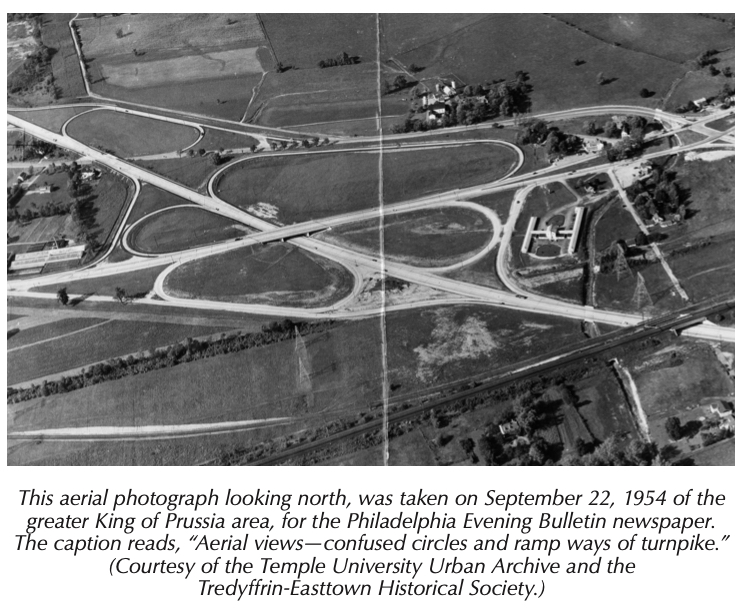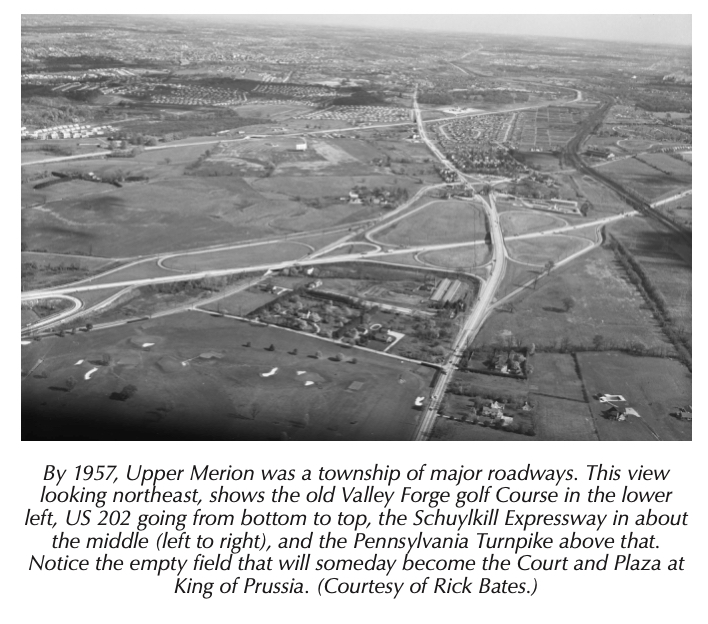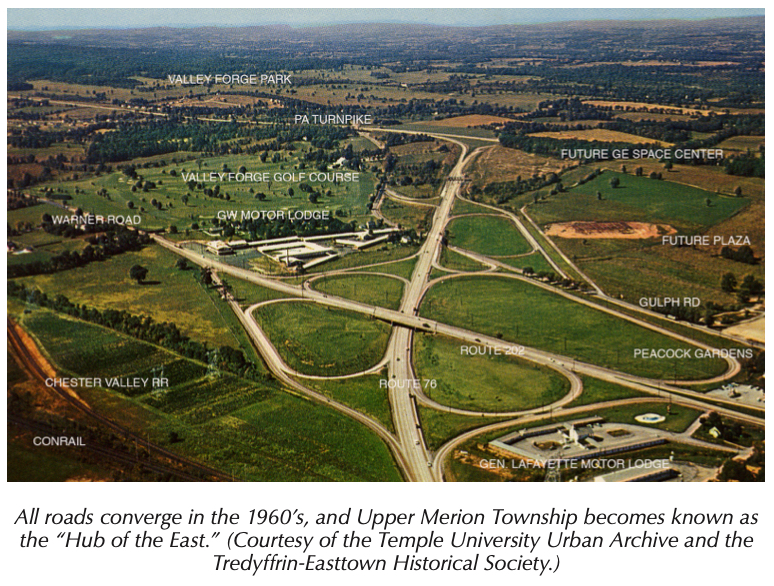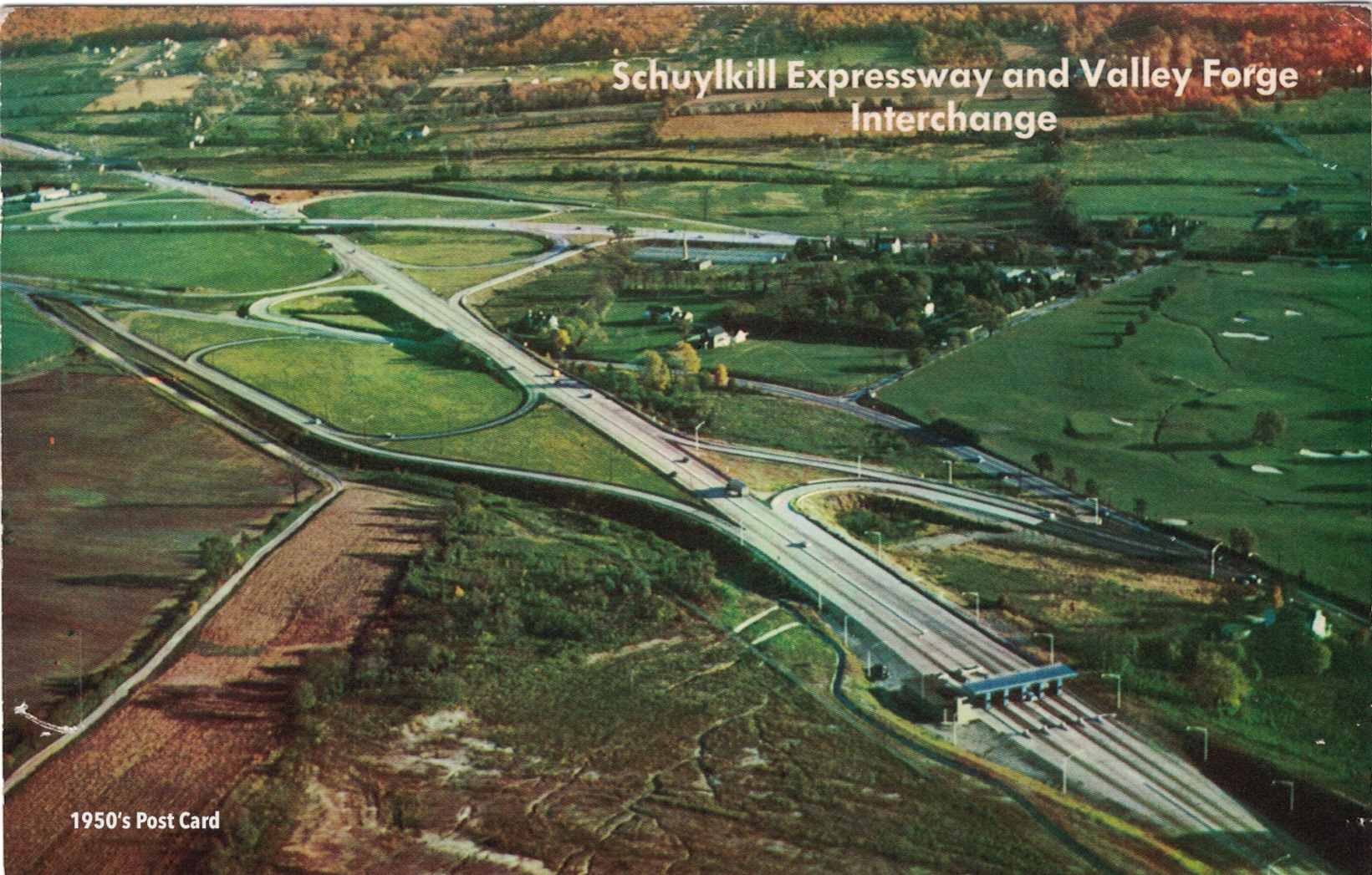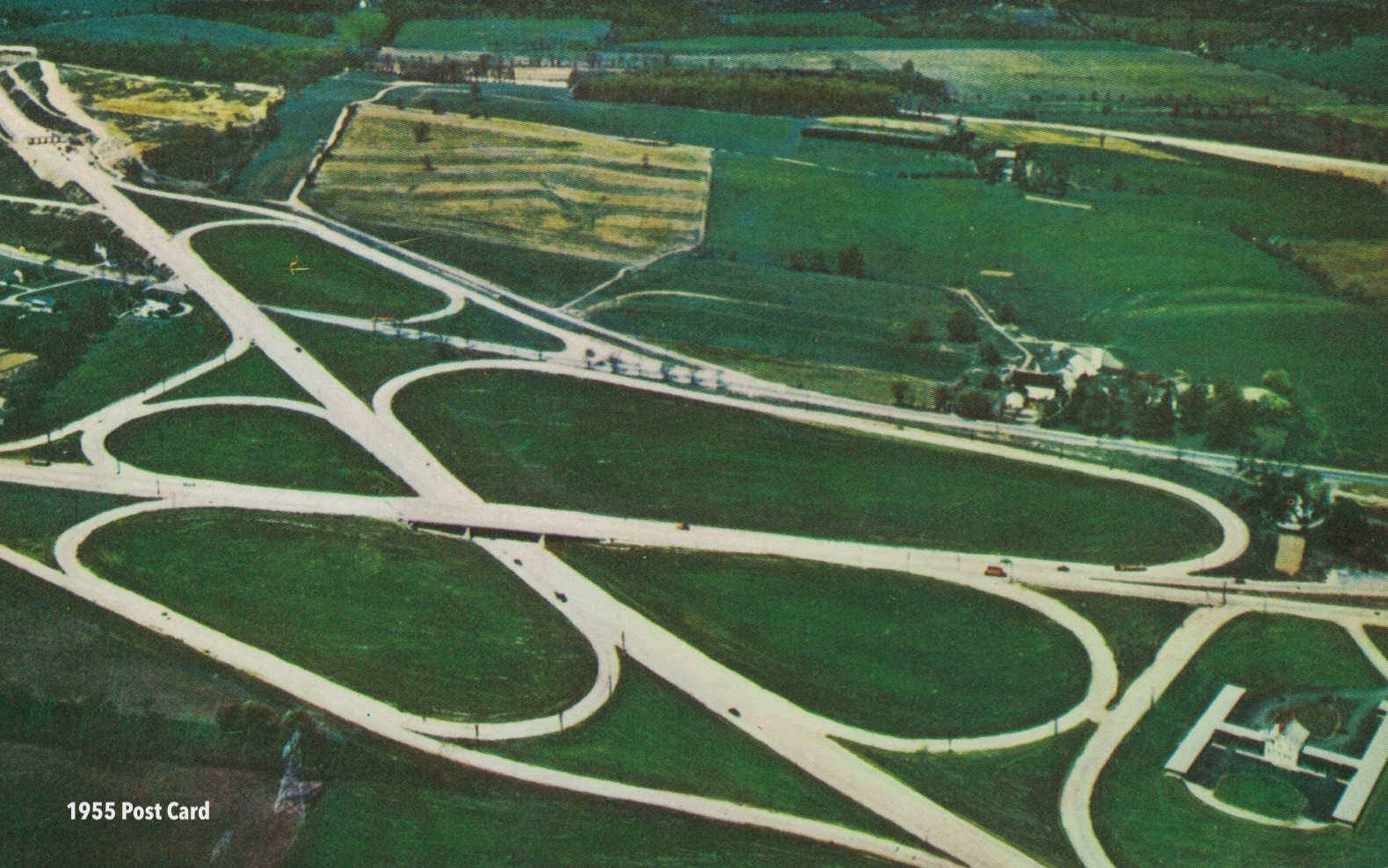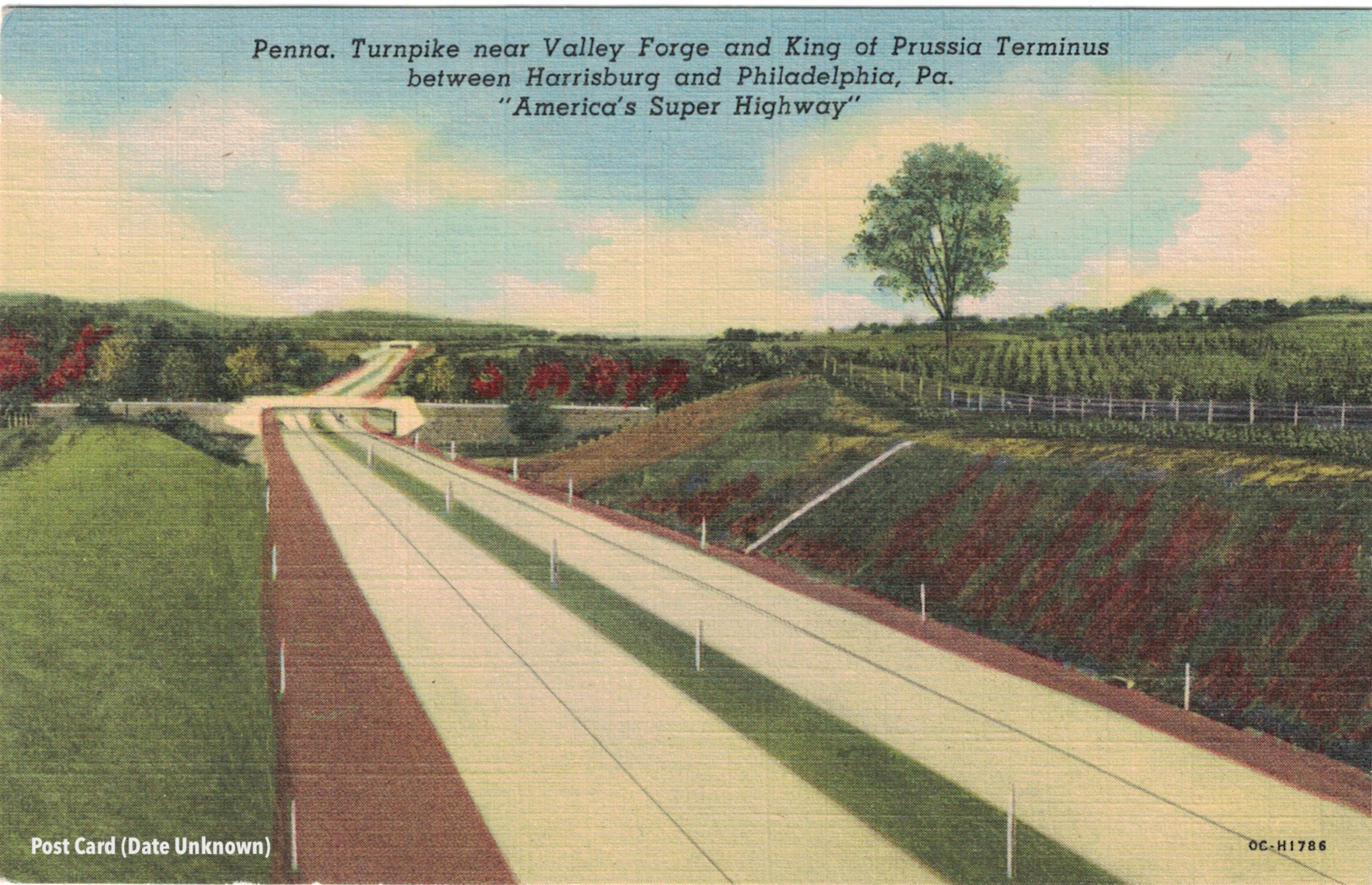The Pennsylvania Turnpike, the first in the nation, officially entered service October 1, 1940, exhibiting new concepts of superhighway design and demonstrating that revenue bonds could finance toll roads. Planners predicted that 1.3 million vehicles would use the turnpike each year, but early actual usage was 2.4 million vehicles, and sometimes as many as 10,000 vehicles per day were recorded. In addition to reducing travel time between Pittsburgh and Harrisburg by three hours, the turnpike created an economic boom to areas along its path. This magnificent road was a monument to national pride and the spirit of motoring during the late years of the depression.
With the success of the original 160-mile segment, the Turnpike Commission planned to expand the original turnpike to a high-speed cross-state route, connecting Philadelphia and Pittsburgh. This was shelved with the onset of World War II, but with the war’s end, the Turnpike Commission resumed construction.
The Philadelphia Extension extended the turnpike east to King of Prussia near Philadelphia and Valley Forge, Pennsylvania. The first phase of that expansion made the highway slightly longer, stretching it to US 15 near Harrisburg. That section opened on February 1, and the rest of the expansion, east to King of Prussia, opened on November 20, 1950. The original eastern end of the Philadelphia Extension was at what is now the present- day interchange with Interstate 76 and US 202.

